Wolfgang Ketterle
Biographical
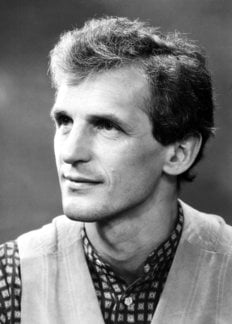
I was born on October 21, 1957, in Heidelberg, a small town in Germany with a charming old city and a famous castle. My parents had come to Heidelberg after the second world war, when many people relocated within Germany searching for better economic opportunities. My mother’s parents were farmers in Silesia, which has now become part of Poland. My father grew up in Memmingen, a small city in the southern part of Germany, where his parents had a canteen.
I enjoyed a childhood of stability and peace, in contrast to my parents who had grown up amidst the conflicts of war. When I was three, we moved from Heidelberg to the village (now city) of Eppelheim, three miles away, where my parents still live. I grew up with an older brother (Günter, 15 months older) and a younger sister (Monika, three and a half years younger).
My parents worked hard to provide security and prosperity for our family. My father first joined an oil and coal distribution company as an apprentice and retired as a director. My mother ran the household and cared for the children; later, she managed a small business distributing first-aid products. In our family, work was not regarded as sheer necessity, but as a defining feature and rewarding aspect of life.
My parents supported all our interests in music, sports and sciences. As they hadn’t been exposed to many of these activities themselves, they did not steer us in certain directions, but rather observed our interests and then reinforced and supported them. That may be one of the reasons why my brother and sister are successful in quite different areas: finance and education.
My explorations of the technical world started with Legos, with which I was quite creative in constructing moving objects with the basic building blocks that were then available. (Legos have become much more fancy since then!) I remember playing with electricity kits, doing repairs of household appliances, and using my father’s power tools for woodworking projects. Explorations into chemistry were done in our basement, sometimes with friends, and my parents must have had quite a bit of confidence in my abilities when they allowed me to experiment with explosive mixtures. (I was quite impressed when such a mixture was able to melt metal.) Other projects included taking old radios and a TV set apart and combining a portable radio and a vacuum tube audio amplifier to create stereo sound. I was interested in learning more about electronics, but I was disappointed that the electronic kits explained only how to put the parts together, not how they really worked. So although I explored technology and science as a child, I didn’t penetrate very deeply, partially because nobody guided me, and partially because I spent a lot of time on school and sports.
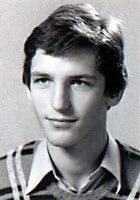
I attended elementary school in Eppelheim and Heidelberg, and then grammar school at the Bunsengymnasium in Heidelberg. My science classes didn’t involve laboratories and the variety of projects and science fairs which my children now enjoy at their schools, but they were instructive and kindled my interest. There was one mathematics teacher, Albrecht Strobel, who was inspirational. He challenged me with special problems, and tried to teach the class to approach mathematical problems in a playful rather than formal spirit. Science and mathematics did not require much of an effort for me, but I worked hard to get the highest grades in languages and other subjects. As a result, I was the best student in my class.
As a student, I liked to play soccer and basketball, and I also enjoyed trying out the various disciplines within track and field. My focus became longdistance running, but I competed occasionally in pole-vaulting. There was a year when I ran five times a week, but my talent was limited; I was occasionally well placed at town-wide events, but never in regional competitions. Still, I have maintained a passion for endurance sports until the present day. When I was around thirty, I met my own personal challenge and finished a few marathons under three hours, and I have completed many long bicycle tours.
It was clear to me early on that after high school I would go to university to study either physics, mathematics, or computer sciences. I decided on physics, as I thought it would combine the real world and mathematics. At that point, I lacked a clear idea of what modern physics was about, but my initial enthusiasm survived when I learnt more about my chosen area.
Before starting university, I received a fellowship from Studienstiftung des Deutschen Volkes (German National Merit Foundation). Part of the fellowship was the opportunity to attend special summer schools. The summer schools took place in the Italian Alps and introduced me to the beauty of mountains and to hiking. It has been one of my favorite activities ever since. Most importantly, those schools brought together a select group of highly talented students. The interactions with them reinforced my motivation to set high goals in life for myself.
In 1976, I entered the University of Heidelberg, my home town. (This traditional university was founded in 1386 as the second German university.) It was clear to me from the outset, however, that after passing the pre-diploma (intermediate exam) in two years time I would transfer to another university and leave my parents’ house. My choice was the Technical University in Munich because Munich is one of the most attractive towns in Germany and because the Technical University is excellent in many different subfields. At this stage, I wasn’t certain what I would specialize in, and had only a diffuse notion of my current field, atomic physics.
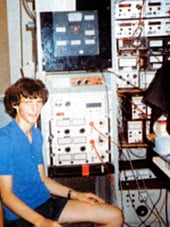
Starting an independent life in a new town was a formative experience. The proximity to the Alps was an invitation to go hiking in the summer and skiing in the winter, and I loved both the small and big theaters in Munich and its arts museums. I also became involved with the peace movement and a group working on third world issues.
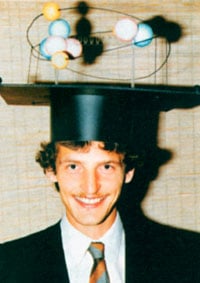
At the end of my diploma studies, I was very interested in theoretical physics and did my diploma thesis on spin relaxation in disordered materials under the supervision of Prof. Wolfgang Götze. I learnt a great deal from his lucidity in analyzing problems and how he obtained physical insight from mathematical solutions. The thesis project took one year and at the end I found myself at a crossroads. Up to this point I had been focusing on purely academic problems, and now wanted to gain experience with applied physics and how it connected with problems of the real world. Therefore, for my PhD. I chose an experimental project, trace analysis of semiconductors using laser spectroscopy. This project was supervised by Prof. Herbert Walther and Dr. Hartmut Figger at the Max-Planck Institute for Quantum Optics in Garching. After one year, it became clear that this project was too difficult to be carried out within the existing infrastructure. Since I didn’t want to start over from scratch, I continued my Ph.D. in the same laboratory, and focused on the basic spectroscopy of small molecules. We generated excited neutral molecules by charge transfer to a mass-selected ion beam. This gave us much higher selectivity in observing certain molecules than the usual discharges, and we obtained almost pure fluorescence spectra of triatomic hydrogen.
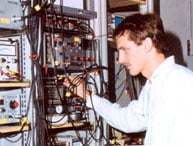
Towards the end of my PhD, I applied the same method to helium hydride and observed the first discrete spectra of this molecule confirming its existence. Helium hydride is the simplest heteronuclear molecule (besides HD), yet its spectrum had not been observed. I remember my excitement when I produced helium hydride for the first time and rotated the grating of the monochromator used to record its spectrum, and there was light almost everywhere in the visible and near infrared spectral regions. In the next few months, I would decipher some of those spectra and obtain first values for the bond lengths and vibrational frequencies of this molecule. It was exciting to determine the basic properties of a new molecule, like in the old days when molecular spectroscopy was established. After earning my PhD, I stayed at the Max-Planck Institute as a postdoc, working on laser excitation of Rydberg states of triatomic hydrogen and helium hydride. I also succeeded in analyzing all the emission spectra of helium hydride, which I had discovered during my Ph.D. The analysis of the spectra was complicated because the rotation of the molecule leads to a break-down of the Born-Oppenheimer approximation known as L-uncoupling. As a result, different electronic states are mixed. In addition, the spectrum was perturbed by interactions between s, p, and d states. Several electronic states and their perturbations had to be simulated together, before the calculated spectra started to show some similarity with the data. I regard the solution of this puzzle as one of the most challenging pieces of work I have done.
Even before finishing my PhD I already knew that I would not stay in molecular spectroscopy. I either wanted to work in a more fundamental area of physics, or focus on an area which was directly related to the needs of society. Another option was going into industry, and I had several interviews and job offers. In the end, I decided to pursue applied research in a university setting, maintaining at least some of the freedom of academic research. I joined the group of Prof. Jürgen Wolfrum at the University of Heidelberg. There, I worked in physical chemistry, focusing on combustion diagnostics with lasers. Molecular spectroscopy, in which I was an expert by this time, was used to measure temperature and molecular concentrations in a flame. One of my main projects was carried out in collaboration with the Volkswagen company. We had to transport a truckload of lasers and equipment to an engine test stand at the plant and encountered problems such as soot on the windows of the transparent engine and optics dripping with oil coming from a Diesel engine.
Changing fields was a crucial experience for me. Amazed to see how much of what I had learnt before could be applied within the new field, I realized that general skills are much more important than specific knowledge. I thought it would take a long time before I became productive in my new environment, but within months, graduate students who had been working in this area for much longer came and sought my advice and leadership. This experience gave me the self-confidence to venture into new areas, and provided the impetus for my later decision to come to the United States and start once again in a new field.
When your work is directly related to cleaner and more efficient combustion, you can easily convince non-scientists of the relevance of your research. I enjoyed this, as well as the interactions with industry and engineers. However, I began to miss something, the quest for pure knowledge and the pursuit of goals which are only vaguely defined and change as the research progresses. I thus realized that my place would be in basic research.
At 32 years, I decided to change fields once more. I wanted to switch to an area of fundamental physics where I could apply some of my knowledge in optics and spectroscopy and thus identified the field of cold atoms as the most promising area. At this time, my assessment was that the field of laser cooling and trapping had reached its peak, but there was still enough to be done. I didn’t anticipate that the best was still to come.
Leaving a long-term position in Germany and taking a short-term postdoc position in the U.S. was a risk for myself and my family. However, the time in Heidelberg in combustion research had helped me to discover what I really wanted to do, and also strengthened my self-confidence. I was willing to take risks which I wouldn’t have taken a few years earlier. By talking to people and browsing through conference proceedings, I identified the leading groups in the field and sent out applications. I was pleased that I received two offers, despite my lack of experience with cold atoms. In the spring of 1990, I joined Dave Pritchard’s group at MIT.
During the first year at MIT, I was supported by a fellowship of DAAD (Deutscher Akademischer Auslandsdienst). It is a great tradition in Germany to support scientific study abroad, but unfortunately such a tradition does not exist in the U.S. Going abroad means more than just immersing yourself in a new culture. It also means that you free yourself from your previous environment and have the opportunity to change and redefine yourself. As a foreigner in a new area of research, I didn’t feel bound to a certain tradition and could develop my own personal style – in lab work, giving talks, and discussions within the group. At MIT, where half of the graduate students are foreigners, there is no prejudice, but rather a tolerance and appreciation for unconventional ideas and styles of work.
I also found a unique atmosphere in Dave Pritchard’s group. Until then, I had worked in two rather large German groups. Dave’s group was smaller, the interactions with him and within the group were very informal; and exciting science was pursued in an atmosphere of comradeship. Dave’s knowledge of the field was enormous. During discussions, he could answer almost any question that came up, or immediately make an estimate whether a phenomenon was observable or not. Initially, I felt both intimidated and challenged by his scientific prowess, but soon we became more equal partners. This was the beginning of a wonderful collaboration that continues until the present day. Some account of it is given in the written version of my Nobel lecture.
Towards the end of my PhD studies, in 1986, I married Gabriele Sauer, whom I had known since my high school years. We had three wonderful children, Jonas, born in 1986; Johanna in 1988; and Holger in 1992, who continue to surprise me with their developing talents and personalities; they enrich my life every day. My wife and I were very different and grew apart over the years. In 2001, we separated, two months before it was announced that I was awarded the Nobel prize. Despite some difficulties, the last year has been full of joy, and the Nobel ceremonies have added extra glamour, bringing together my family, friends and colleagues. It is those people to whom I am most grateful, and they have instilled in me a passion for life and a critical, but always optimistic perspective for the future.
This autobiography/biography was written at the time of the award and later published in the book series Les Prix Nobel/ Nobel Lectures/The Nobel Prizes. The information is sometimes updated with an addendum submitted by the Laureate.
Nobel Prizes and laureates
Six prizes were awarded for achievements that have conferred the greatest benefit to humankind. The 12 laureates' work and discoveries range from proteins' structures and machine learning to fighting for a world free of nuclear weapons.
See them all presented here.
